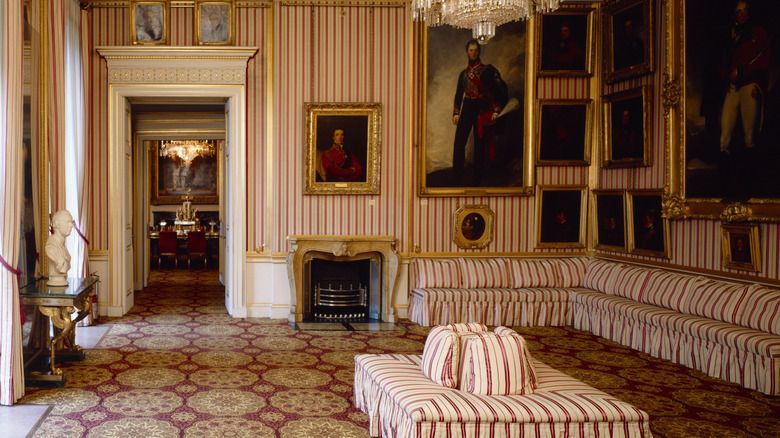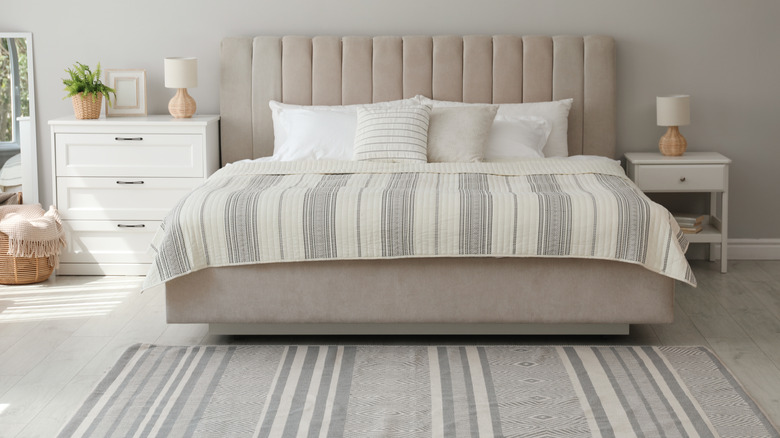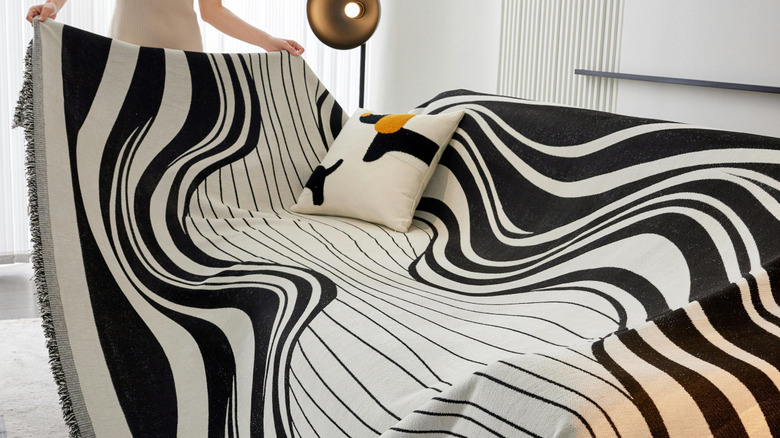Stripe Drenching Is The Bold Decor Move Designers Are Loving Right Now
Pattern drenching, a concept which hearkens back to the Palace of Versailles in the 17th century and the decorating styles of the Victorian Era, is a technique that embraces an explosion of patterns in a room — on the walls, on the furniture, and for the very pattern-happy, the ceiling. Stripe drenching is the more specific offspring of this decorating technique, which has also surged in popularity in 2025.
The most exuberant stripe-drenching examples embrace a few different varieties of stripes — fat, pin, bold, and barely there — all in one space. Stripe-loving decorators aren't limited by patterns going in one direction. Horizontal and vertical stripes zip through these spaces with abandon, playfully enticing conversations between sailor blue and tangerine orange stripes (or what have you). In fact, the boldest home decorators lean toward covering their living rooms and bedrooms in stripes, stripes, and more stripes. However, if you think that'll be too much for you at first, the design firm, House of Hackney, suggests starting small, like decorating with stripes in the bathroom. The walk-in closet is another small spot that's good for stripe drenching, particularly if you think you'll be bold enough to extend the stripes into your sleeping space eventually.
How to use stripe drenching in your home
Decorating with patterns like stripes personalizes a space. That's one of the chief pros with using them in decor, but to really do pattern drenching well, the technique does require some advanced planning. Although it's perfectly acceptable and even encouraged to mix and match patterns, you want to be strategic about it. Pick two or three stripe patterns you plan to emphasize and leave it at that. It's also ideal if the striped patterns share a common color palette because those hues bind everything together visually.
Additionally, when you're mixing patterns, you want to change up the fabrics and textiles in the room, too. Different textiles have different textures, which add visual weight to a room. For example, a heavy striped wool rug anchors everything in the space, including the linen on the bed and the wallpaper on the walls. Finally, when you do mix up the patterns, choose one big and bold pattern to be the main one and then a couple of smaller striped patterns to be the accents. This keeps the eye moving around the room.
Things to avoid with stripe drenching
Some pros, like Elizabeth Rees of Chasing Paper, shy away from spaces like the kitchen, where architectural features such as cabinets and countertops can break up the visual flow of the patterns. This is also true in other rooms of the house that have stand-out features. These don't even have to be big, bold architectural features, like a beamed ceiling. A big, clunky sofa can break up the visuals, and not in a good way, so assess the room carefully before you bring in the stripes.
You also want to be careful not to completely overwhelm your space. To give your eye a resting place, designate a spot like a bed in the master bedroom or the ceiling in the living room as a pattern-free zone. If you simply must have stripes on even these spots, consider making the stripe a border on the bedspread or the corner where the ceiling and the walls meet.
Finally, avoid putting the same pattern together in certain spaces around the room. For example, don't put the same stripe pattern on the wall and the headboard of the bed or in the space where the entryway stairs meet the landing. These transitional spaces work better with a contrast, and if you're inclined to bring in any other kinds of patterns, like a bold botanical print, these are the spaces to do it. This is because the break in pattern signals to the brain and the eyes that a change of pace and place is coming up.


